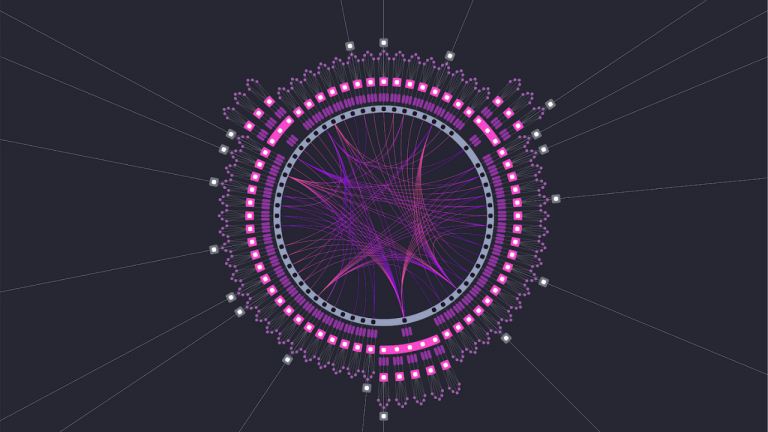A deep dive into Polkadot’s tokenomics

Built using the Substrate blockchain framework, Polkadot is forming an ecosystem that both complements existing dApp infrastructure and provides new opportunities recognized by over 400 projects developing smart contracts, oracles, NFTs, DAOs, bridges, privacy, gaming, IoT, DEXs, and other DeFi solutions on the platform.
At the heart of this expanding Polkadot ecosystem is the DOT token, going beyond just payments to facilitate various functions across the network. So what is DOT, and how can it be put to use in this blockchain of blockchains?
What Is DOT?
DOT is the native token of the Polkadot network, the smallest unit of which is known as a Planck.
DOT is also an inflationary token, in contrast to the fixed supply monetary policy of protocols like Bitcoin. This is designed to incentivize the network by dynamically adjusting according to the participation rates of users, with a current supply of approximately 1 billion tokens.
Other than serving ancillary functions as a transferable token, there are a number of key uses for DOT across the ecosystem from governance to staking, parachain auctions, and crowd loans.
DOT for Governance
Polkadot enables DOT holders to vote and participate in the governance of the network, including determining fees, parachain connections, and upgrades, alongside a Council and Technical Committee.
Active DOT token holders can make an improvement proposal to the network by bonding their tokens (depositing a minimum amount to a proposal) for a certain period and vote on the proposals of others. Those that gather the highest amount of bonding support will be selected first in each voting cycle. Tokens are then unbonded once proposals have been brought to a vote.
The Council is an on-chain entity elected by the DOT token holders and responsible for determining which proposals should proceed. It manages the treasury from the collection of network fees and represents passive DOT holders in the ecosystem. The Technical Committee comprises the network’s development teams to then action approved proposals.
Any proposal has to go through a referendum so that all DOT holders, weighted by stake, make the final decision.
DOT for Nominated Proof-of-Stake Consensus
DOT is also used to facilitate the NPoS consensus mechanism for Polkadot, designed with the roles of validators and nominators to maximize chain security. Those interested in maintaining the network can stake DOT to run validator nodes, validating the central Relay Chain and connected parachains, and participating in consensus to receive block rewards in return. Validator rewards are paid out equally to all validators regardless of stake, encouraging a more fairly distributed validator set.
Other DOT holders are incentivized to participate as nominators, helping to secure the network by staking DOT and selecting up to 16 of the best performing validators in return for a share of the staking rewards. Staking rewards are then distributed pro-rata to all stakers after the validator payment has been deducted.
DOT staking also serves as a defensive mechanism and disincentive against malicious attacks. Validators are punished for misbehavior such as going offline or running modified software by getting their DOT slashed. Both the validators and their nominators will then lose a percentage of their bonded/staked DOT. Slashed DOT is added to the treasury and used as determined by the decentralized governance process.
DOT for Parachain Slots Auctions
Parachains are the specialized shards of Polkadot that allow transactions to be processed in parallel, most commonly taking the form of a blockchain by leasing one of the scarce dedicated connection slots to Polkadot’s Relay Chain.
For a parachain project to connect to the Polkadot network, it needs to participate in a permissionless on-chain candle auction with the highest bidder securing the lease for a certain period. Prospective parachains will bid using DOT, with the winner locking that DOT for the duration of the lease, which is returned once the lease expires and the parachain is removed.
DOT for Parachain Crowdloans
Polkadot also allows prospective parachains to source tokens for auction bids from the wider community of DOT holders in a decentralized form of crowdfunding that spreads risk, reduces costs, and allows for more competitive slot bids. That community then has skin in the game and can decentralize a parachain even more by airdropping their tokens to participants willing to put up their DOT to help them secure a slot.
Anyone can create a crowdloan campaign for a parachain slot, which can last over several auctions without having to start a new campaign if unsuccessful in securing a slot initially.
Each crowdloan campaign has an index and DOT holders can simply send a special transaction that references the index to participate. If a crowdloan campaign is successful in a slot auction bid, participants’ DOT will also be locked for the duration of the lease and returned when it expires.
The incentive for community DOT holders to do this is the ability to support their favorite projects and gain rewards from a parachain that may be higher than simply staking the tokens, while still retaining ultimate control over them.
Auctions will require a lot of DOT to be put up and taken off the market to support bids and winning slots, but with Kurura, the first parachain auction on Polkadot’s Kusama canary network, already raising $200 million in KSM, it suggests the demand for Polkadot parachain auctions will be there too.
This is where the game theory kicks in. After all, users could simply choose to stake to gain staking rewards with less risk than participating in crowdloans. So, the parachain project will need to provide enough of an incentive to convince users to lock DOT up for a leasing period instead.
However, the ecosystem is dynamic, so the actions of users affect other users, reinforcing a cycle of behavior. If participants are incentivized enough to unbond their DOT from staking to take part in crowdloans, less DOT will be locked in staking, meaning the APR for staking rises to compensate. This causes the demand for DOT to rise and the price of DOT goes up.
But that means compensation for participating in crowdloans also goes up, creating more demand for DOT and so on. Therefore, as the market constantly balances between crowdloan incentives and staking rewards, there’ll be a lot of competition for DOT among participants.
Powering the Blockchain of Blockchains
Polkadot places the interests of DOT holders at the center of its architecture, aimed at developing a protocol that helps to deliver a Web 3.0 where users rather than corporations are in control.
Connecting an interoperable multi-chain network, while maintaining an equitable governance model empowered by DOT, enables the decentralized scalability this rapidly expanding ecosystem needs to deliver the value proposition of the blockchain of blockchains.



